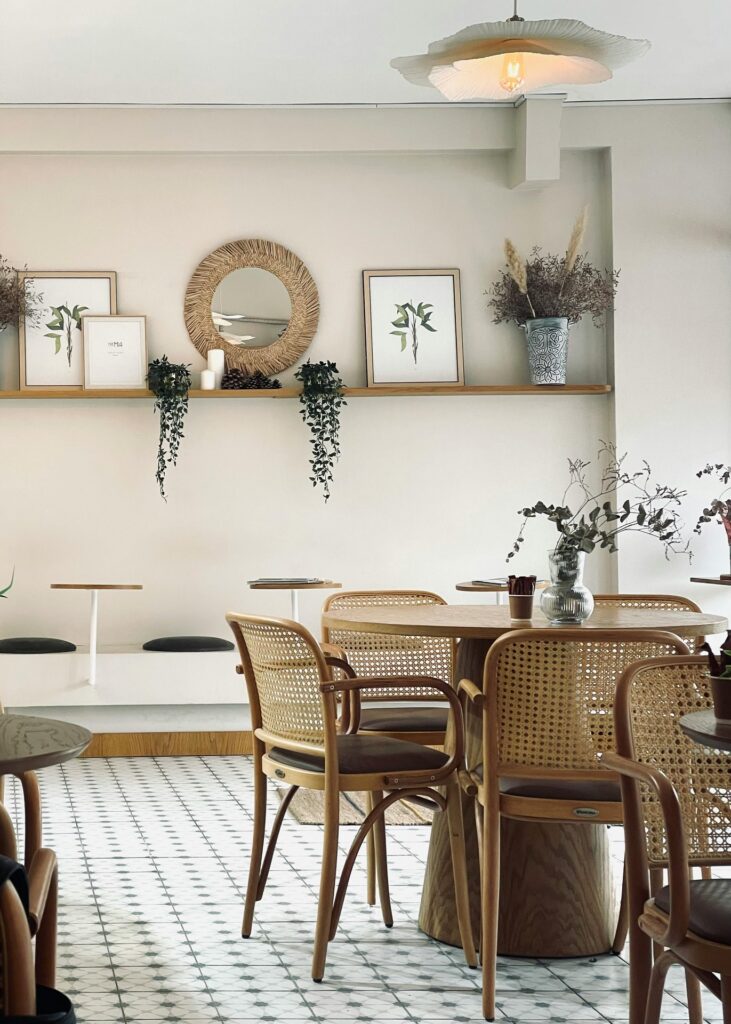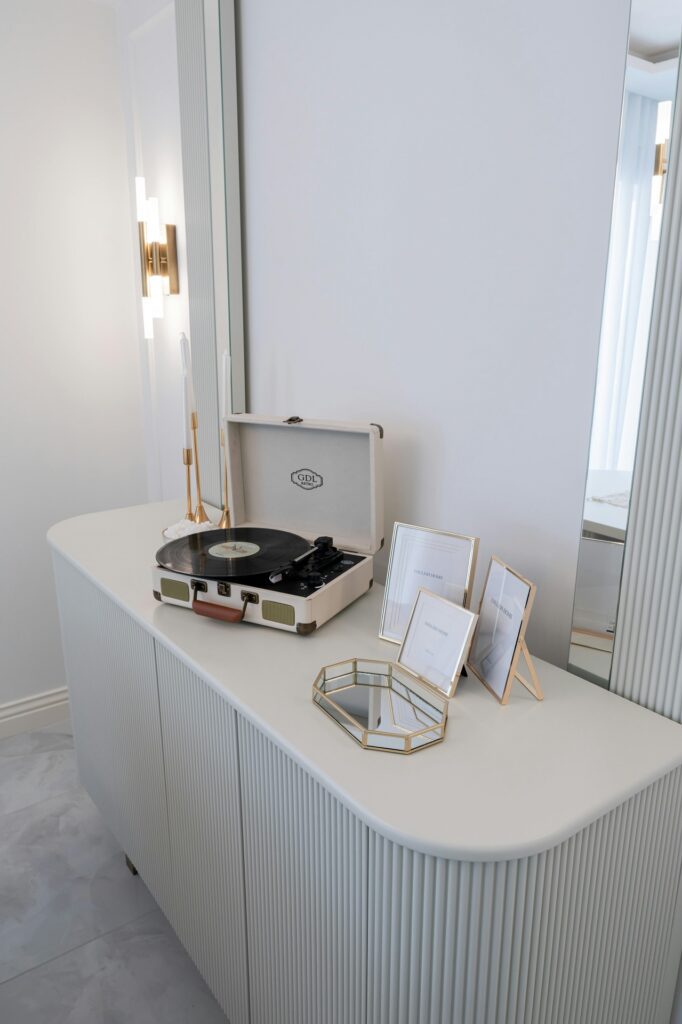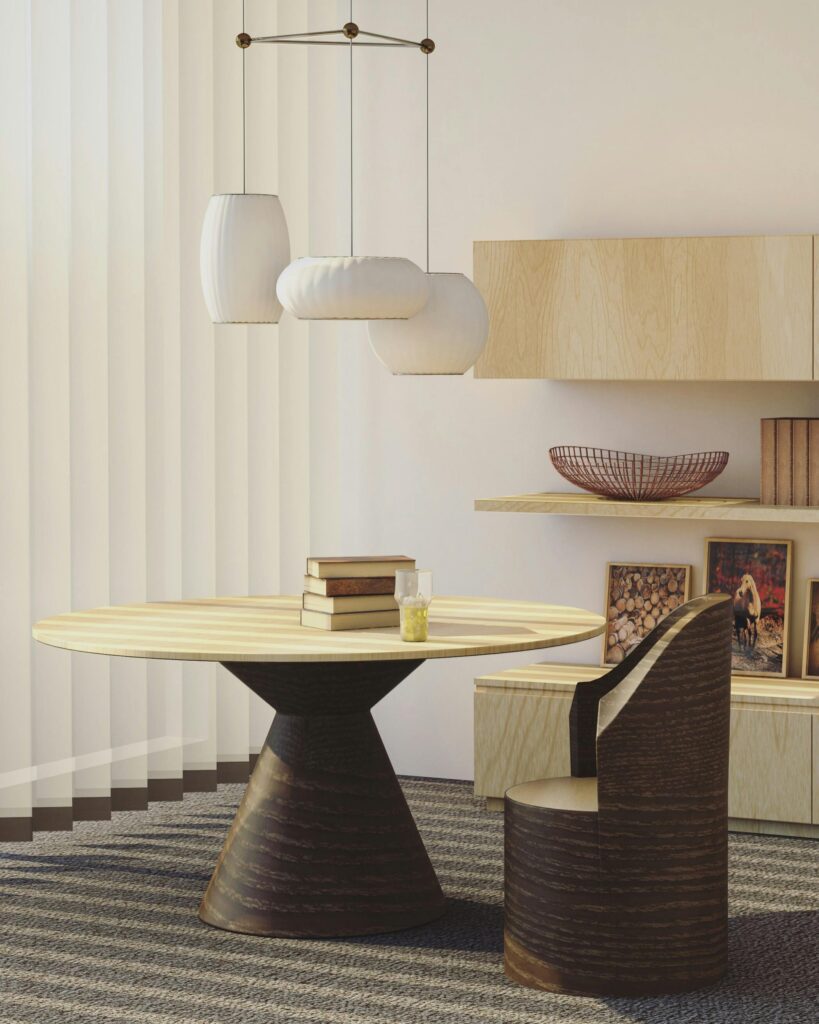The minimalist interior design style is often associated with simplicity, clean lines, and an uncluttered atmosphere that prioritizes space, light, and functionality. While this streamlined aesthetic is visually appealing, many people worry that minimalism can leave a home feeling cold or impersonal. The great news is that you can embrace a minimalist style without losing warmth or comfort. By thoughtfully choosing the right furniture, textures, and decorative elements, you can create a space that embodies both elegance and coziness.

Achieving a minimalist interior doesn’t mean sacrificing character or comfort. In fact, the simplicity of minimalism allows the essential elements of your home—such as high-quality furniture and carefully selected natural materials—to shine, creating an atmosphere that feels balanced, inviting, and uniquely yours. The key is to strike a balance between clean, open spaces and the use of warm textures, soft lighting, and subtle accent pieces that add depth and personality.
In this article, we’ll explore how to achieve a minimalist design that preserves the elegance of simplicity while introducing layers of warmth to make your home feel welcoming and lived-in.
Embracing Minimalism: The Basics of Simplicity
At its core, minimalism is about paring down your environment to focus on what truly matters, removing excess and keeping only items that contribute to the functionality and aesthetic of the space. This design philosophy encourages you to create an environment that feels open, uncluttered, and serene, where every object serves a purpose. A minimalist approach not only simplifies your living space but also offers a sense of calm and clarity in daily life.
However, minimalism isn’t about stripping your home of character or personality. It’s about curating your space intentionally, selecting a few high-quality, meaningful pieces that enhance both the aesthetic and functionality of your home. This could be a sleek wooden dining table or a carefully chosen sofa that reflects your style while contributing to the overall harmony of the room.
Clean lines, an uncluttered layout, and a neutral color palette are key features of minimalist design. Neutral tones such as white, beige, and soft grays are often used to create a calm and soothing backdrop. Open spaces are fundamental in minimalist interiors, allowing for better flow and a sense of airiness. However, it’s crucial to balance these simple elements with a sense of warmth and coziness, which can be achieved through thoughtful choices in furniture, textures, and lighting.
For instance, incorporating a plush wool rug or a linen throw can soften the clean, sharp lines of minimalist furniture, adding warmth and making the space feel more inviting. Similarly, choosing the right lighting—such as soft, ambient lights rather than harsh overhead bulbs—creates a welcoming atmosphere while maintaining the elegant simplicity of the design.
By focusing on these principles, minimalism allows you to embrace both simplicity and elegance, crafting a home that feels spacious yet deeply personal. The goal is not just to declutter, but to design a living space that supports your lifestyle, offering both beauty and functionality.
Choosing the Right Furniture for a Minimalist Space
When designing a minimalist space, every piece of furniture plays a crucial role, both functionally and aesthetically. The goal of minimalism is to reduce visual clutter while maintaining a sense of balance and harmony. Therefore, selecting furniture with clean lines and simple shapes is key. Avoid overly ornate designs or heavy, bulky furniture that could disrupt the light and open feeling typical of minimalist interiors.
Opt for multifunctional furniture that serves dual purposes. For example, a storage bed not only provides a place to sleep but also discreetly offers extra storage, helping keep the space tidy and uncluttered. Similarly, modular sofas can be arranged in various configurations, providing flexibility and functionality without adding unnecessary bulk. By choosing furniture that is both practical and visually streamlined, you create an environment that feels open and functional, essential for the minimalist aesthetic.

Focus on Quality Over Quantity
A minimalist home is all about quality rather than quantity. Instead of filling your space with multiple items, the focus should be on selecting a few high-quality pieces that will last and contribute to the room’s overall design. This approach not only prevents clutter but also ensures that each piece stands out for its craftsmanship and durability.
For example, a solid wood table with a smooth finish can serve as a focal point in the dining area, offering both elegance and timeless appeal. Similarly, a leather armchair with sleek lines can add a touch of luxury without overwhelming the space. These high-quality items offer both aesthetic value and durability, aligning with the core principles of minimalism—simplicity, longevity, and functionality.
When selecting materials, opt for natural options like wood, stone, or metal. These materials lend a timeless and organic feel to the space, complementing the minimalist style. A wooden dining table introduces warmth and texture, while a stone coffee table adds a grounded, natural element. These choices enhance the minimalist atmosphere, creating a balanced space that is as elegant as it is functional. By focusing on quality materials, your furniture becomes more than just practical—each piece adds character and warmth to your minimalist home without cluttering the design.
Incorporating Heveastore Into Your Minimalist Design
When striving for a minimalist home, finding high-quality and functional pieces is essential, and this is where Heveastore shines. Their curated selection of furniture and decor is designed to reflect the principles of minimalism—focusing on clean lines, natural materials, and craftsmanship that complements simplicity.
For example, a solid wood dining table from Heveastore can serve as both a functional centerpiece and a statement of understated elegance, perfectly fitting a minimalist space. These pieces emphasize the beauty of natural wood, enhancing warmth while keeping the room uncluttered and serene.
Heveastore also offers a variety of handcrafted ceramics and decorative sculptures, ideal for adding personal touches without overwhelming the minimalist aesthetic. These items are small yet impactful, introducing texture and visual interest while maintaining the sense of openness and simplicity that defines minimalist design. Whether it’s a carefully chosen ceramic vase or a minimalist sculpture, each piece brings a subtle warmth and sophistication to the space, enhancing both form and function.
Maintaining Warmth in a Minimalist Home
One of the key challenges in minimalist interior design is ensuring that your space doesn’t feel sterile or cold. The minimalist aesthetic, with its emphasis on clean lines and simplicity, can sometimes come across as stark or impersonal. To counter this, it’s important to incorporate elements that introduce warmth and create a welcoming atmosphere. Achieving this balance allows you to maintain the minimalist ethos while making your home feel inviting and comfortable. By thoughtfully choosing the right textures, lighting, and color, you can create a minimalist home that exudes both simplicity and warmth.
Adding Warmth with Textures
In a minimalist home, the use of textures is crucial for creating a cozy and inviting space. While minimalist interiors often rely on smooth surfaces and simple shapes, adding soft textiles helps break up the hard lines and cold materials, making the space feel more comfortable and lived-in. Consider incorporating plush rugs, wool throws, and linen cushions to introduce layers of texture that soften the overall design.
For example, placing a neutral woven rug under a dining table adds warmth without overwhelming the minimalist aesthetic. A cashmere throw draped over the arm of a sleek, minimalist sofa introduces a luxurious texture that contrasts beautifully with the simplicity of the furniture. Even though the color palette may remain understated—often relying on neutral tones like beige, gray, or white—the textures add depth and visual interest, preventing the space from feeling flat or uninviting.
The careful addition of natural materials such as wool, cotton, or jute helps to maintain the clean lines of minimalism while infusing a sense of coziness. These materials not only provide warmth but also add a natural, organic feel to the space, creating a balanced design that feels grounded yet airy.
Choosing the Right Lighting
Lighting plays a fundamental role in any interior design style, but it’s particularly important in minimalist spaces. Without the distraction of excessive decorative elements, the quality and warmth of the lighting become even more noticeable. To maintain a warm ambiance, it’s essential to opt for soft, ambient lighting over harsh, overhead lights, which can make the room feel too stark or clinical.
Consider using wall sconces, floor lamps, and table lamps with warm-toned bulbs to create a gentle glow throughout the room. This type of lighting softens the minimalist aesthetic and makes the space feel more comfortable. Avoid harsh, direct lighting that can accentuate sharp lines and create too much contrast. Instead, choose lamps that diffuse the light and bathe the room in a soothing glow.
When selecting lighting fixtures, it’s important to choose pieces that match the clean lines of minimalist design but still add warmth through their materials and light quality. For instance, a brass floor lamp with a sleek, minimalistic design can maintain the simplicity of the space while providing a subtle glow that enhances the overall atmosphere. Similarly, natural materials like wood or linen for lampshades can add both texture and warmth, complementing the minimalist look while contributing to a more inviting environment.
By incorporating soft lighting and warm textures, you can transform a minimalist space into a cozy, welcoming home without sacrificing the simplicity and elegance that define minimalist design.

Incorporating Natural Elements
One of the simplest and most effective ways to infuse warmth and vitality into a minimalist space is by incorporating natural elements. This approach helps balance the clean, often stark lines of minimalist design by introducing organic forms and materials that bring the outdoors inside. For example, adding indoor plants can instantly breathe life into a neutral room, injecting color and vibrancy into the space. Even a single tall potted plant, like a fiddle leaf fig or a monstera, placed in a corner can make a significant impact, softening the sharp lines and making the room feel more inviting and lived-in.
In addition to plants, incorporating natural materials such as wood, wool, or leather is key to creating warmth in a minimalist environment. Wooden furniture, for instance, can introduce rich textures and organic patterns that add depth to the space without overwhelming the simplicity. A sleek wooden coffee table or oak dining chairs can soften a minimalist design while maintaining its clean, uncluttered look. Likewise, a woolen throw draped over a sofa or a leather accent chair can bring warmth and texture, making the room feel cozier while still adhering to minimalist principles.
These natural elements work together to enhance the minimalist design by grounding it in materials that reflect the environment. Not only do they make the space more comfortable, but they also contribute to a sense of balance between the simplicity of the design and the natural world.
Opt for Neutral Tones with Warm Accents
A neutral color palette is a hallmark of minimalist decor, but it doesn’t have to feel cold or impersonal. Opting for warm neutral tones like beige, warm gray, or soft white can create a cozy and inviting backdrop for your furniture and decor while maintaining the simplicity that defines minimalist design. These hues soften the space, making it feel comfortable yet clean, and provide the perfect foundation for a minimalist room.
To add a touch of interest and warmth without straying from the minimalist aesthetic, you can incorporate subtle accent colors through smaller decor pieces like pillows, artwork, or ceramics. Earth tones such as terracotta, mustard, or olive green work particularly well in minimalist spaces, as they evoke a natural feel without overwhelming the room. These colors complement the neutral palette while introducing an additional layer of warmth and depth.
For example, placing terracotta planters or mustard-hued cushions in a living room decorated with white walls and wooden furniture adds just enough color to enhance the room’s character. Similarly, a ceramic vase in olive green or a piece of artwork that features subtle earth tones can add personality while keeping the minimalist vibe intact. This thoughtful use of color ensures that the space remains serene and uncluttered while feeling welcoming and balanced.
Curating Decorative Items Mindfully
While minimalism is often about reducing clutter, this doesn’t mean your home should be devoid of decoration. The minimalist approach encourages you to be intentional with your decor, carefully curating each item so that it serves a clear purpose—whether functional or purely aesthetic. The key is to select pieces that align with the overall design, avoiding excessive decoration that can disrupt the clean lines and simplicity of the minimalist style. By choosing decorative items mindfully, you can enhance the warmth, personality, and elegance of your space without compromising the minimalist aesthetic.
Instead of filling your home with multiple smaller pieces, it’s important to focus on a few well-chosen items that make a statement. This helps maintain the sense of space and serenity that defines minimalist interiors. Every piece should feel meaningful, whether it’s a functional sculpture, a beautiful ceramic vase, or a thoughtfully chosen piece of artwork.
Art and Personal Touches
When selecting artwork for your minimalist space, choose pieces that reflect your personality and add a subtle touch of character to the room without overwhelming it. One large, impactful art piece can make a statement without cluttering the space. For example, a black-and-white photograph or a neutral-toned abstract painting can serve as a focal point on an otherwise bare wall, enhancing the room’s elegance while staying true to minimalist principles.
Large, bold pieces like an abstract work in neutral tones draw the eye while complementing the simplicity of the surrounding decor. Whether you prefer modern art or more traditional artistic expressions, the minimalist rule is to avoid overcrowding your walls. Stick to one or two key pieces in each room, allowing the art to breathe and the space to feel open.
In addition to artwork, you can add personal touches through small but meaningful decorative objects such as sculptures or handcrafted ceramics. These items should be chosen for their quality, not quantity, ensuring that each one enhances the warmth and individuality of your home. For instance, a beautifully crafted ceramic bowl or a small bronze sculpture placed on a shelf can add richness and texture without overpowering the room. The key is to be selective—each accent should feel like it belongs in the space and should bring a sense of balance rather than crowding it.
By thoughtfully curating art and personal decorative elements, you can maintain the clean, uncluttered look of minimalism while also expressing your own personality. The right pieces will enrich your home, adding depth and warmth while adhering to the minimalist principles of simplicity and restraint.

Conclusion
Achieving a minimalist interior that balances simplicity and elegance without sacrificing warmth is a thoughtful process that focuses on quality, functionality, and mindful curation. By choosing clean-lined furniture, incorporating natural elements like wood and indoor plants, and using textures such as wool throws and woven rugs, you can create a minimalist space that feels cozy and inviting. Soft lighting and warm neutral tones also help soften the starkness often associated with minimalism, making the room feel more personal and lived-in.
The careful selection of artwork and decorative accents—like handcrafted ceramics and personal sculptures—brings warmth and individuality to the space while adhering to the minimalist principle of quality over quantity. This approach ensures that your home remains uncluttered, serene, and aesthetically pleasing, while still reflecting your personal style.
In essence, minimalist design isn’t about stripping everything away; it’s about being intentional with what you choose to keep, ensuring every element in your space adds to both the aesthetic and the comfort of your home. Through thoughtful balance, you can create a minimalist home that is as welcoming as it is stylish.
FAQs on Minimalist Interior Decoration
Minimalist interior design emphasizes simplicity, clean lines, and functional spaces. The focus is on creating a clutter-free environment that highlights only the essential items. Minimalism values quality over quantity, encouraging fewer, high-quality pieces that serve both practical and aesthetic purposes. The overall effect is a peaceful, open space where everything has a purpose.
A common misconception is that minimalist spaces feel cold. To avoid this, add warmth through natural textures, soft lighting, and neutral tones. Use materials like wool throws, linen cushions, or plush rugs to introduce softness, and choose warm neutrals like beige or soft gray for walls and furnishings. Incorporating textures helps soften the clean lines and starkness of minimalist decor, making it feel more inviting and comfortable.
Multifunctional furniture with simple, clean lines works best in a minimalist home. Choose pieces that are not only visually appealing but also offer practical uses. For example, a sleek sofa with built-in storage or a wooden dining table with a smooth finish can serve as focal points while maintaining the minimalist aesthetic. Furniture in a minimalist home should emphasize functionality without adding unnecessary bulk or clutter.
Yes, while neutral palettes are central to minimalist design, adding accent colors can introduce warmth and depth without disrupting the simplicity. Consider subtle shades like terracotta, mustard, or olive green. These earth tones provide warmth and complement the neutral backdrop while keeping the room cohesive and uncluttered. Use these colors sparingly through decor items like cushions, rugs, or ceramics to create focal points without overwhelming the space.
Incorporating natural materials like wood, wool, and stone adds warmth and prevents your home from feeling too stark. For example, a wooden coffee table or stone countertops offer organic textures that soften the overall design. Introduce soft textiles like throws, pillows, and woven rugs to break up hard surfaces and clean lines. These additions make a minimalist space feel more personal and comfortable while maintaining its streamlined appearance.
Lighting is crucial in creating warmth in a minimalist design. Choose soft, ambient lighting like floor lamps, table lamps, or wall sconces with warm-toned bulbs to avoid the harshness that overhead lights can bring. This gentle lighting creates a relaxing atmosphere and complements the minimalist aesthetic by providing a soft glow without adding visual clutter. Natural light is also essential in minimalist spaces, as it enhances openness and serenity.
In minimalist spaces, artwork should be chosen carefully to reflect your personality while adhering to the clean, uncluttered look. Opt for large, impactful pieces, such as a black-and-white photograph or an abstract painting in neutral tones, to serve as a focal point. The key is to keep the walls uncluttered, so one significant art piece per room is often enough. This allows the artwork to shine without overwhelming the space.
To add life and warmth to a minimalist space, incorporate natural elements like indoor plants, wooden furniture, or stone accents. A single tall plant in a corner or a small succulent on a side table can introduce greenery and break up neutral tones. Natural wood pieces, such as a wooden bench or shelves, add organic texture, while stone elements, like a marble coffee table, can introduce natural sophistication to the room.
Focus on quality over quantity when decorating your minimalist home. Select a few key pieces that are both functional and aesthetically pleasing, such as a well-crafted sofa or a stylish storage unit. This ensures your space stays clutter-free while maintaining a cozy, lived-in feel. Add warmth through soft textiles and lighting, but avoid filling the space with unnecessary items. Each piece should contribute meaningfully to the overall design.
Absolutely! Minimalism is ideal for small spaces because it emphasizes functionality, open areas, and a lack of clutter. By carefully choosing multifunctional furniture and focusing on clean lines, you can create a feeling of spaciousness, even in a small room. Keeping surfaces clear and using vertical space efficiently also enhances the openness, making the area feel more expansive and less crowded.
